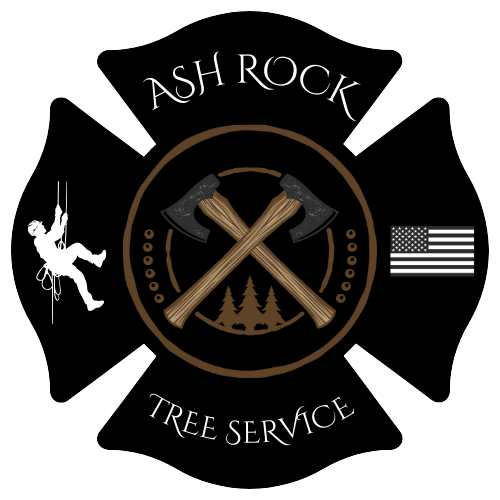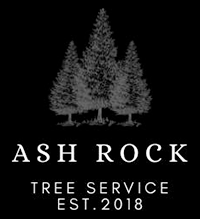Ash Rock Tree Service Blog

Dead trees can pose serious risks to both your property and personal safety. While it may seem harmless to leave one standing for a while, delaying removal can lead to costly damage and potential injury. Professionals have the skills, experience, and equipment necessary to safely take down a dead tree and prevent future problems. At Ash Rock Tree Service, our local arborists can identify dead trees and safely remove them. Here are five important reasons why hiring a professional to remove dead trees right away is always the best decision. Dead Trees Can Cause Injuries and Property Damage When a tree dies, its structure begins to weaken. Over time, the trunk and branches lose strength, making them much more likely to fall without warning. Falling limbs can seriously injure anyone nearby or cause major damage to vehicles, fences, and roofs. Professionals can safely remove dead trees before they shed major limbs or collapse, protecting both people and property from harm. Storms Can Turn Dead Trees into Major Safety Hazards Dead trees are particularly vulnerable during high winds and severe weather. Because their roots no longer anchor them firmly, they can easily be uprooted and topple over. Removing the tree before peak storm season greatly reduces the risk of damage and eliminates the chance of a dangerous, unexpected fall during bad weather. Dead Trees Attract Pests and Disease Once a tree dies, it becomes an ideal breeding ground for pests such as termites, carpenter ants, and beetles. These insects can quickly spread to nearby healthy trees or even migrate toward your home, creating an expensive pest control problem. Dead trees can also harbor fungal diseases that may infect other trees in your yard. By having a professional remove the tree promptly, you can stop pests and pathogens from spreading. Dead Trees Can Hurt Your Curb Appeal and Property Value Curb appeal plays a big role in how others perceive your home, and a dead or decaying tree can make the property look neglected. Prospective buyers might see it as a sign of poor maintenance. A professional can not only remove the dead tree safely, but also provide advice on replacement planting to restore your landscape’s beauty. Professionals Have the Right Equipment and Expertise Tree removal can be far more dangerous than it appears. Dead trees are unstable and unpredictable, and without the right tools and experience, a DIY removal attempt can lead to injury or serious property damage. Professionals have the training and specialized equipment to take down trees efficiently and safely. Tree Removal in Salem, OR For expert tree removal in Salem, OR and the surrounding area, contact Ash Rock Tree Service at 503-447-6231 . Feel free to give us a call to request an estimate!
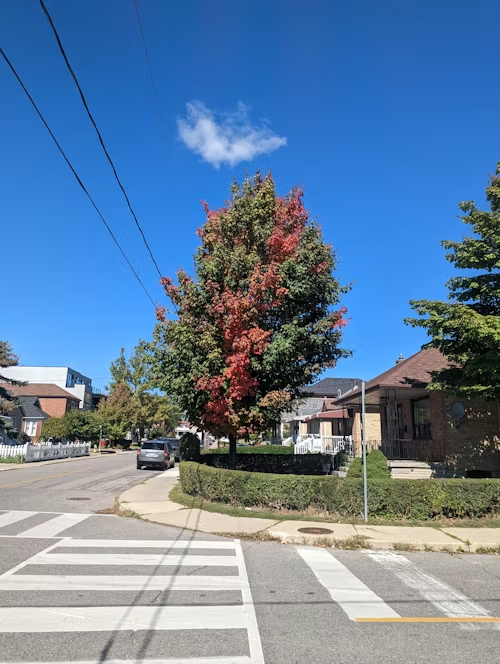
When a large tree becomes unstable, it can quickly turn into a hazard. Strong winds, heavy rains, or internal decay can cause a compromised tree to fall, potentially leading to significant property damage or injury. It’s important to recognize when a tree near your home is showing signs of imminent danger. At Ash Rock Tree Service, our local arborists can identify hazardous trees and safely remove them. Here are four indications that a big tree may be threatening your home and should be evaluated by a professional arborist as soon as possible. Large Cracks in the Trunk or Major Limbs Deep splits or cracks in a tree’s trunk or large branches often signal structural weakness. These cracks may form suddenly after a storm or gradually as the tree ages. If left unaddressed, they can cause heavy limbs or even the entire tree to break apart, especially during high winds. A cracked trunk is particularly alarming, as it means the tree may be on the verge of splitting. Noticeable Leaning Toward Your House A tree that leans naturally is not always dangerous, but a sudden or increasing lean, especially in the direction of your home, is a serious red flag. This change often means the tree’s root system is compromised and no longer able to stabilize its weight. A leaning tree can topple with little warning, making prompt professional evaluation crucial. Exposed or Damaged Roots The roots are a tree’s foundation, and when they are damaged, decayed, or exposed, the entire tree can become unstable. Signs of root problems include soil heaving around the base, visible rot, or fungus growing near the roots. Because roots anchor the tree, any damage in this area significantly increases the risk of collapse, particularly during windstorms or heavy rains. Hollow or Decayed Trunk A hollow trunk or significant decay inside the tree is a sign of advanced deterioration. Even if the tree still produces leaves, internal decay compromises its structural integrity. Large hollows reduce the tree’s ability to withstand strong winds, making it much more likely to fall unexpectedly and cause damage. Tree Removal in Salem, OR For expert tree removal in Salem, OR and the surrounding area, contact Ash Rock Tree Service at 503-447-6231 . Feel free to give us a call to request an estimate!

At Ash Rock Tree Service, we aim to consistently exceed our customers’ expectations by providing top-quality tree services at fair rates. From tree removal to pruning to wildfire prevention , our team of local arborists can expertly handle the job. And we greatly appreciate it when our clients offer feedback about their experiences with us. Here’s a look at some of our latest customer reviews. “Ash Rock Tree Service exceeded all expectations. From the initial consultation to the final cleanup, their team was professional, courteous, and incredibly efficient. Communication was clear throughout the entire process, and they arrived exactly when they said they would. What impressed me most was the attention to safety and the thorough job they did cleaning up after — you’d hardly know they were here. I highly recommend Ash Rock to anyone in need of expert tree service. Five stars all the way!” —Justin B. “Ash Rock is professional, easy to work with, and gets the job done perfectly. We highly recommend to anyone! We have been using them for a few years now.” — Kristin B. “Aaron and the Ash Rock Tree Service crew were exceptional to work with. They gave us a really great price, they were professional, knowledgeable, and the skill/service they provided was the best I could have asked for. I will ONLY use Ash Rock Tree Service for any future needs I have at home. Top notch services.” — Dylan F. “Aaron, owner of Ash Rock tree service is a leader in the industry. He is widely respected, courteous, on time, efficient and hires the best staff. Ash Rock has been providing defensible space, fire hardening landscaping, and tree management in the fire district where I serve with 100% satisfaction. Ash Rock’s work in our high fire risk community makes my job safer and easier. Thank you Aaron! Highly recommend this company.” — Walt Bernard. Fire Chief, Row River Rural Fire Protection District. Dorena, Oregon. “Ash Rock does great work, at a great price, in a timely and professional manner. I would highly recommend them to anyone with a project large or small!!! 5 stars!!!” — Brad B. Arborist in Salem, OR For expert tree services in Salem, OR and the surrounding area, contact Ash Rock Tree Service at 503-447-6231 . Feel free to give us a call to request an estimate!
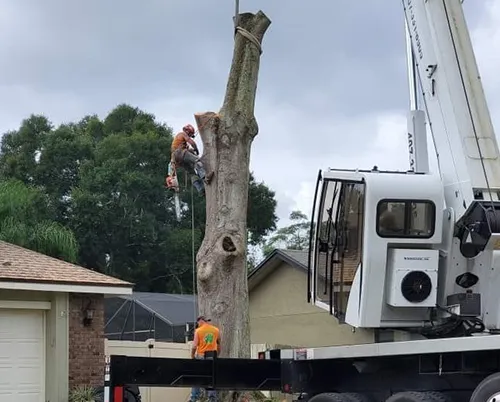
When a big tree dies, it becomes more than just an eyesore—it becomes a serious safety risk. Dead trees are unstable and can fall without warning, potentially damaging your home, harming people, or taking down power lines. If you suspect a tree on your property may be dead, it's important to have it professionally assessed and removed if necessary. At Ash Rock Tree Service, our local arborists can identify dead trees and safely remove them. Here are four signs that a large tree has died and should be taken down by a professional arborist. No Leaf Growth During the Growing Season One of the most obvious signs of a dead tree is the absence of leaves during the spring and summer months. If your tree remains bare while other trees are full and green, it’s likely no longer alive. Even evergreen trees that start losing their needles in large amounts may be in serious decline. A tree without leaf growth during the growing season should be professionally evaluated as soon as possible. Large Dead Branches in the Canopy If you notice many large dead limbs in the upper sections of the tree, it could be a sign that the tree has died or is well on its way. Dead branches become brittle and break easily, especially in wind or storms. These falling limbs can pose a major hazard to people, vehicles, and buildings nearby. A tree with extensive deadwood, especially in the upper canopy, is a likely candidate for removal. Peeling or Missing Bark The bark on a healthy tree acts like a protective skin. When bark starts peeling off in large sections or falls away entirely, it’s a strong indication that the tree is no longer thriving. If the trunk appears dry, cracked, or hollow beneath missing bark, the tree has likely stopped drawing nutrients and water and may already be dead. A tree in this condition can quickly become structurally unsound. Fungus Growing Around the Base Fungal growth at the base of a tree can signal internal rot. Once decay sets in at the trunk or root level, the tree loses structural integrity and becomes much more likely to fall. While not all fungus automatically means death, it’s often a sign that the tree is potentially in serious decline and should be evaluated for removal. Tree Removal in Salem, OR For expert tree removal in Salem, OR and the surrounding area, contact Ash Rock Tree Service at 503-447-6231 . Feel free to give us a call to request an estimate!
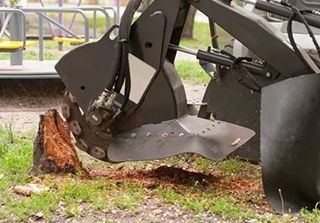
While a tree stump might seem harmless, it can cause several problems if left standing. Eliminating stumps after tree removal is an important step in maintaining a healthy, attractive, and functional outdoor space. At Ash Rock Tree Service , our local arborists provide expert stump grinding and removal in the greater Salem, OR area. Here are five reasons to take care of leftover stumps as soon as possible. They Attract Pests Dead tree stumps are a magnet for pests, especially insects like termites and carpenter ants. As the wood decays, it becomes an ideal habitat for these unwanted guests. Over time, these pests can spread to nearby trees or even migrate into your home, causing further damage. Removing the stump eliminates this potential breeding ground and reduces the risk of infestations on your property. They Interfere with Lawn Care A stump in the middle of your yard can make routine lawn maintenance a hassle. It can damage lawnmower blades, limit your ability to trim grass evenly, and make other landscaping tasks more difficult. Over time, this can lead to uneven turf and poor curb appeal. Removing the stump helps restore a smooth, usable lawn surface. They Pose a Tripping Hazard A stump left in your yard can be a serious tripping hazard, particularly for children and anyone who isn’t familiar with your landscape. Whether it's hidden by grass or obscured in low light, a stump increases the risk of injury. This is especially concerning in high-traffic areas of your property. Eliminating the stump helps make your yard safer for everyone who uses it. They Can Lead to Regrowth Even after a tree is cut down, the stump can sometimes sprout new shoots and attempt to regrow. These suckers often grow rapidly and can become difficult to control. By removing the stump entirely, you prevent this unwanted regrowth and keep your landscaping tidier. They Detract from Your Property's Appearance Even if the stump is low to the ground or tucked away, it still detracts from the overall appearance of your landscape. A rotting stump looks neglected, especially when compared to a well-maintained lawn or garden. By eliminating the stump, you improve your property’s visual appeal and boost its curb value. Stump Grinding & Removal in Salem, OR For stump grinding and lot clearing in Salem, OR and the surrounding area, contact Ash Rock Tree Service at 503-447-6231 . Feel free to give us a call to ask for an estimate!
